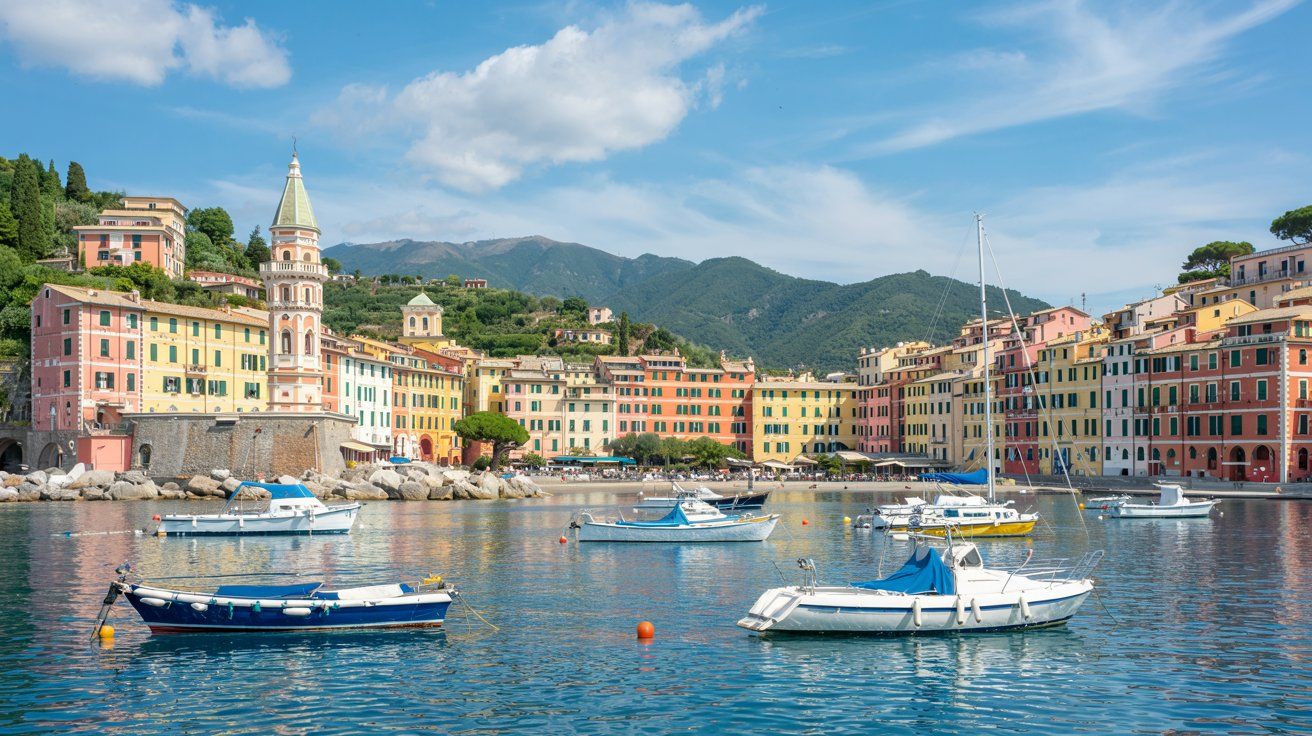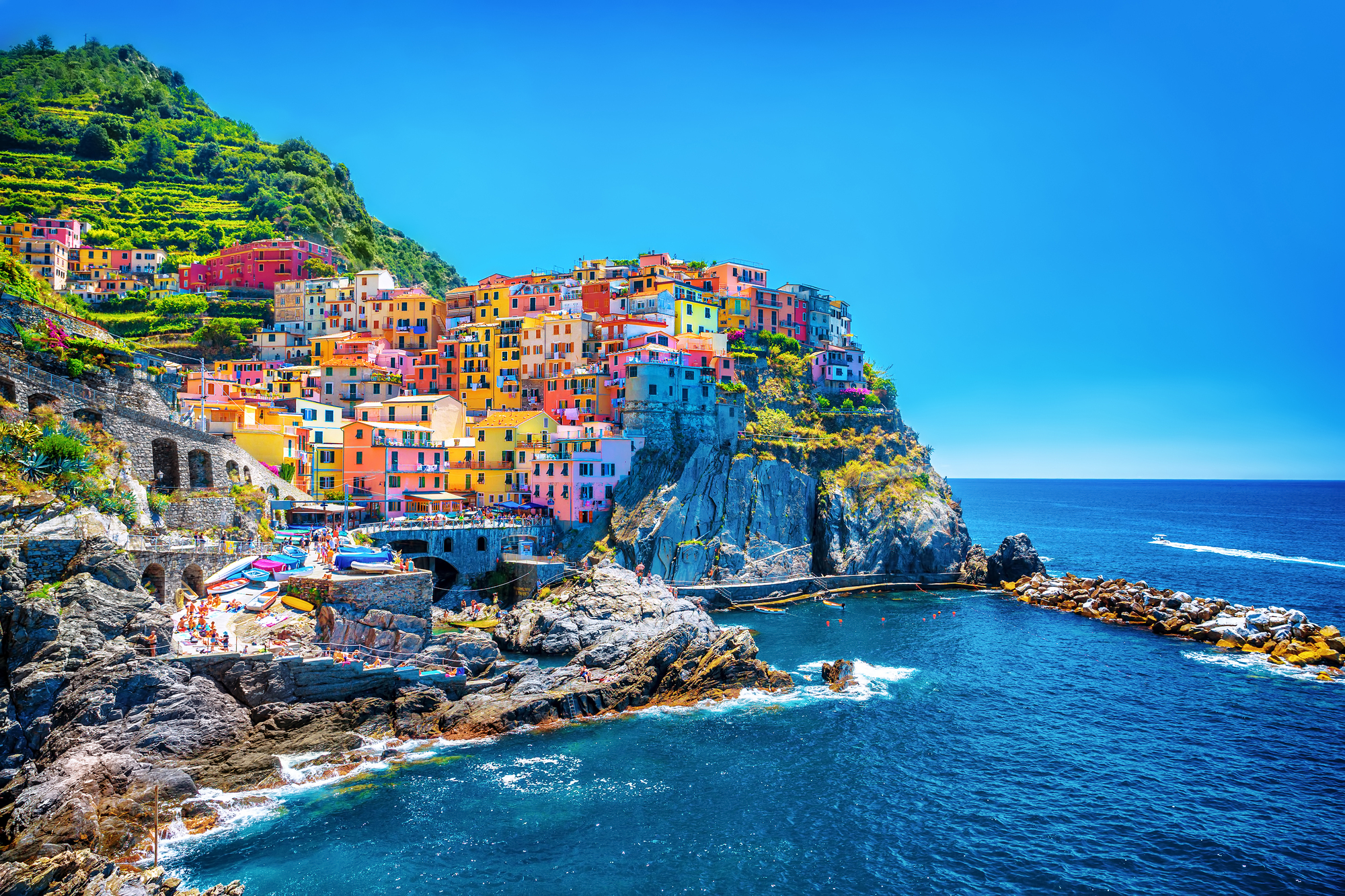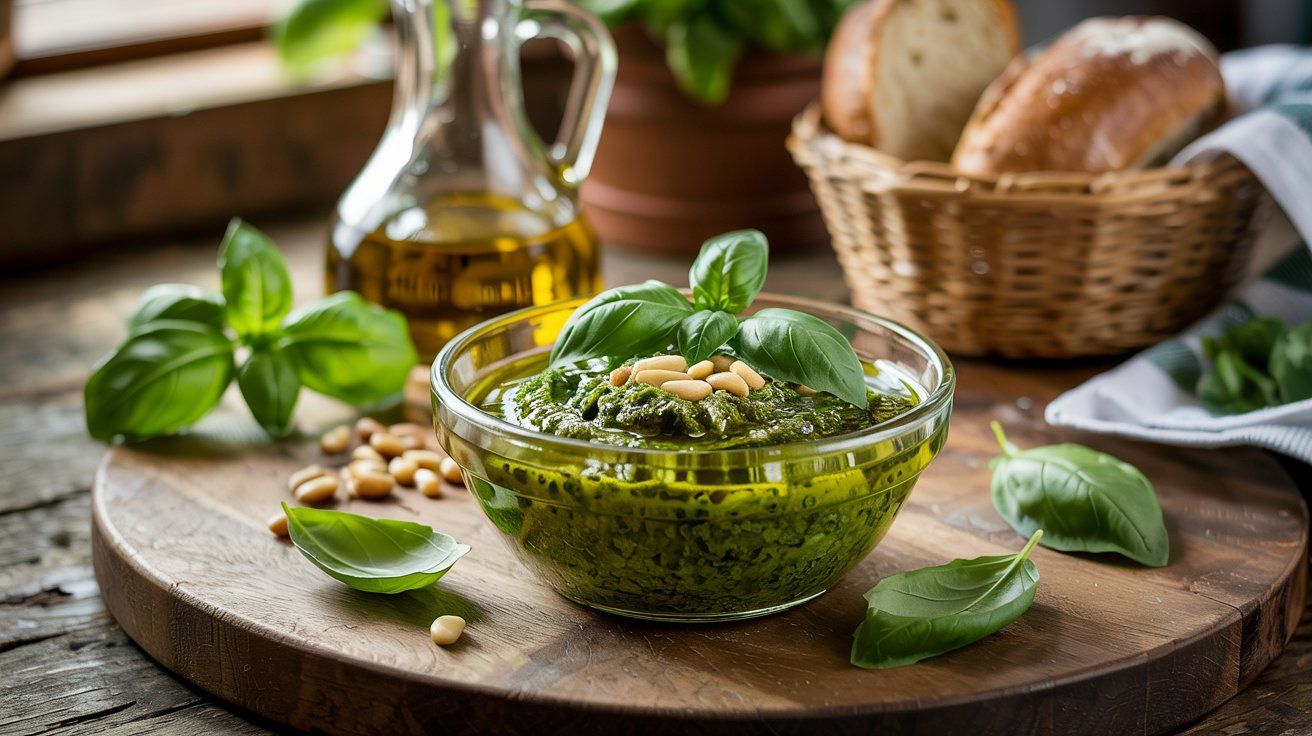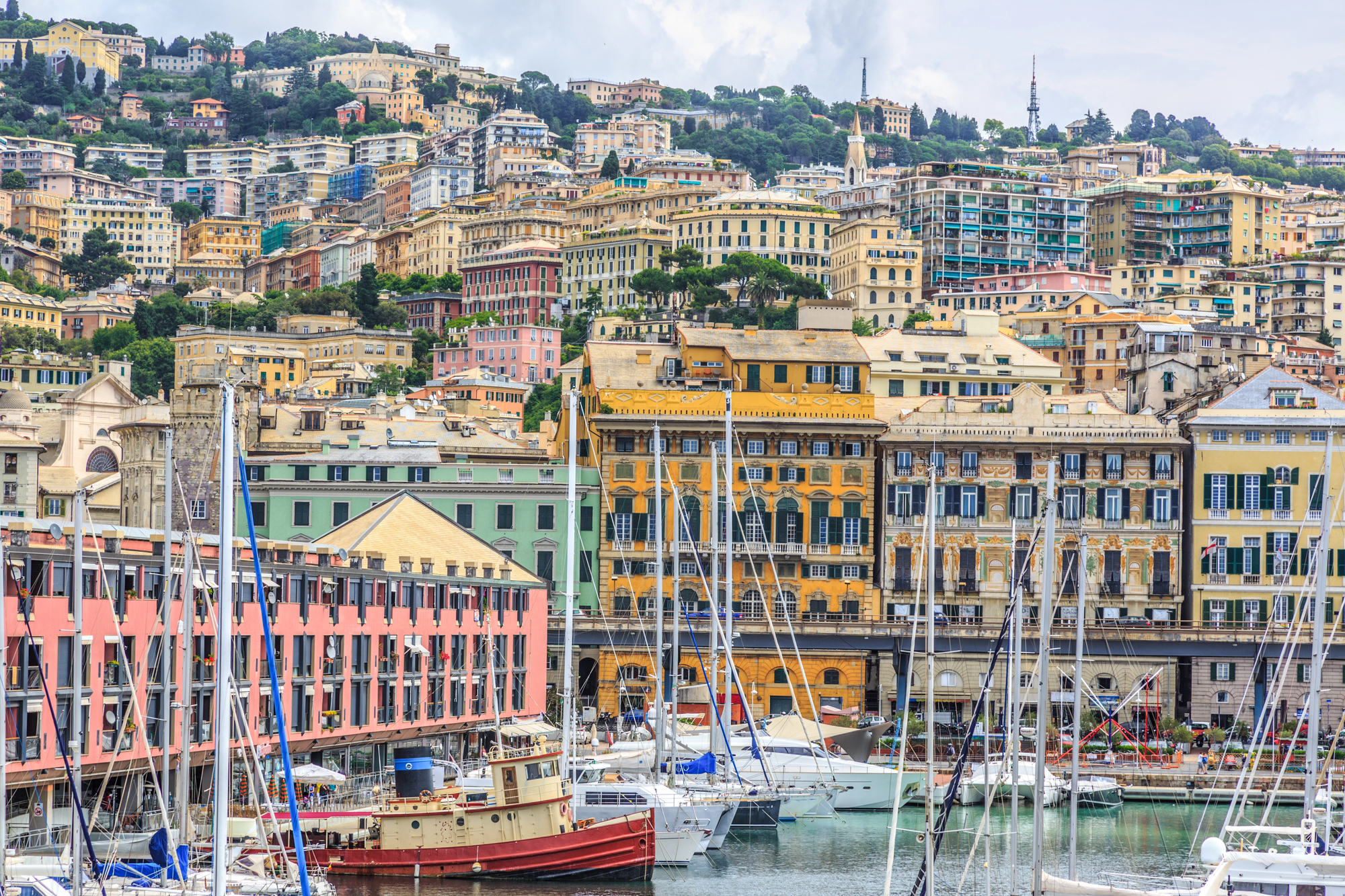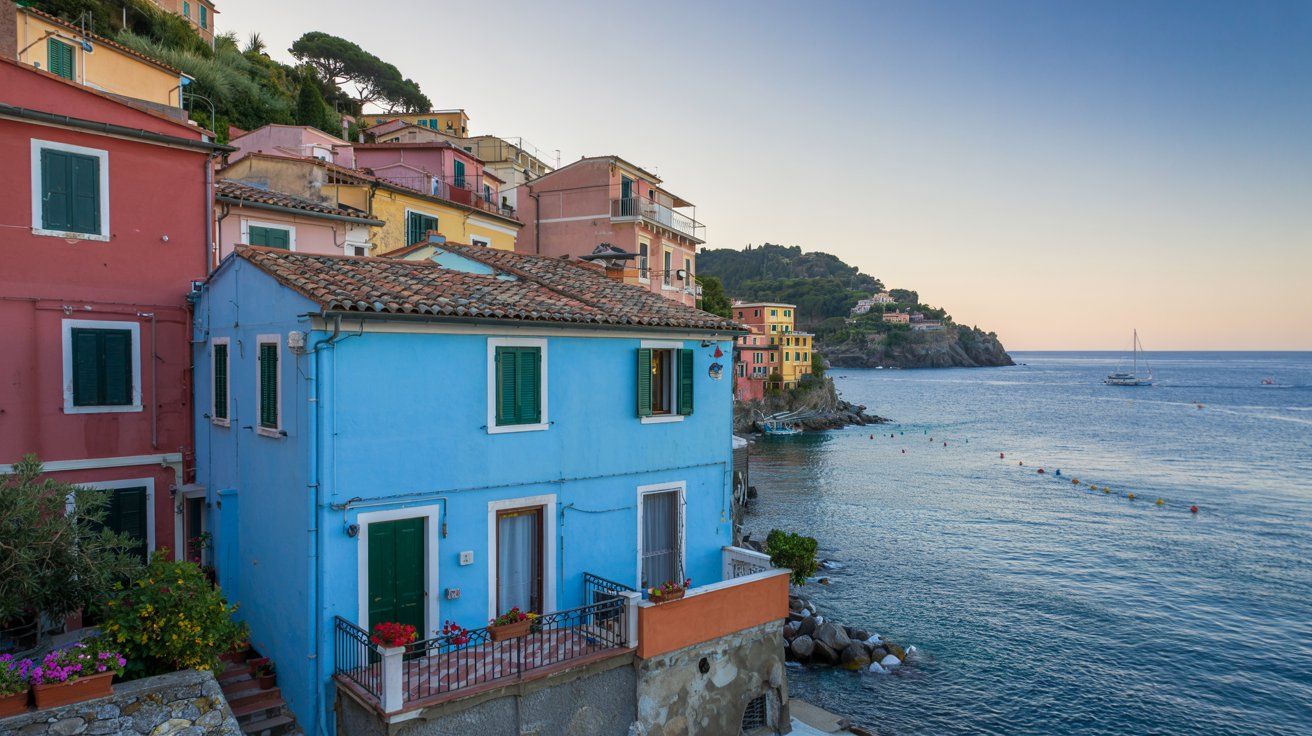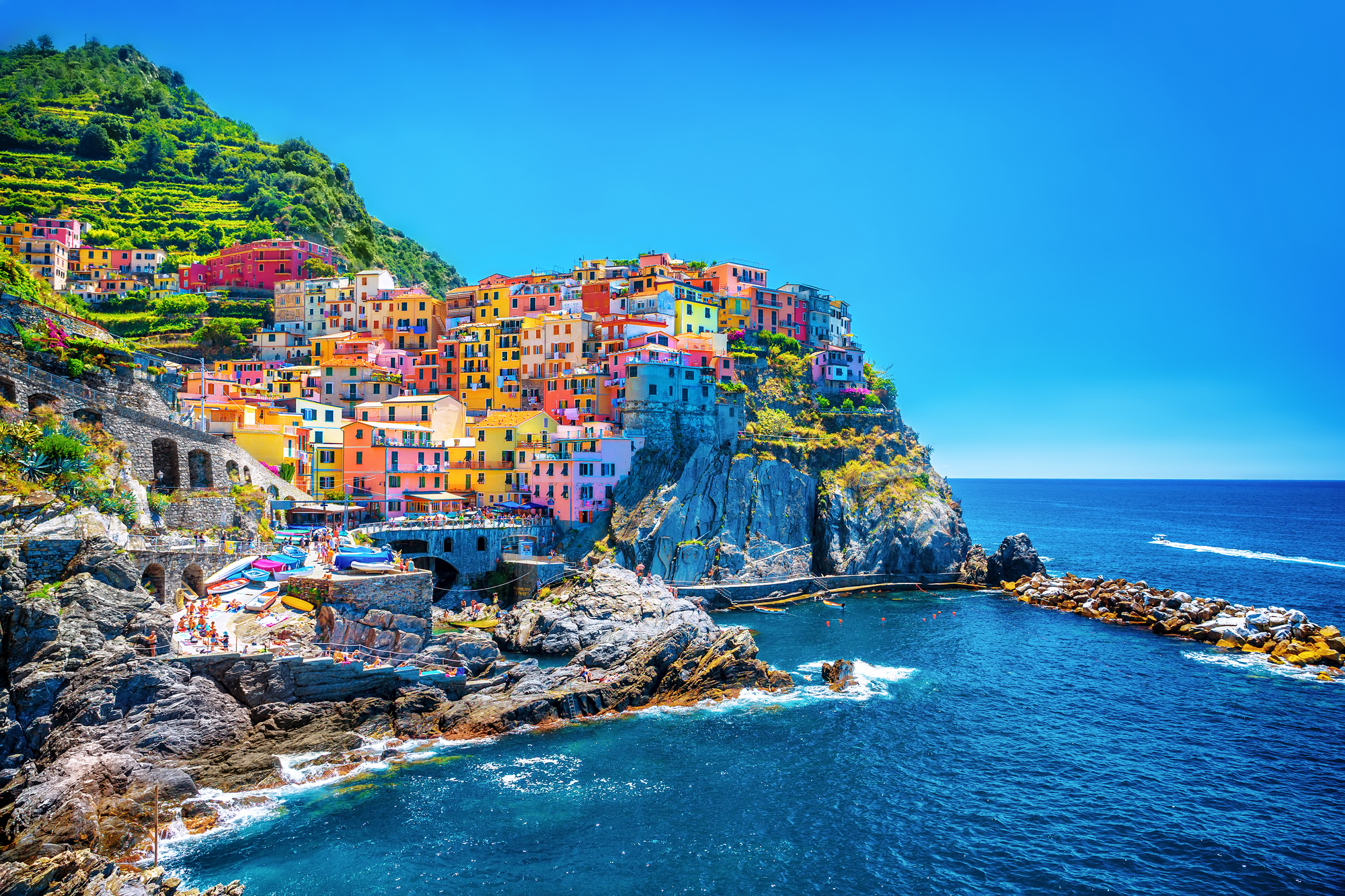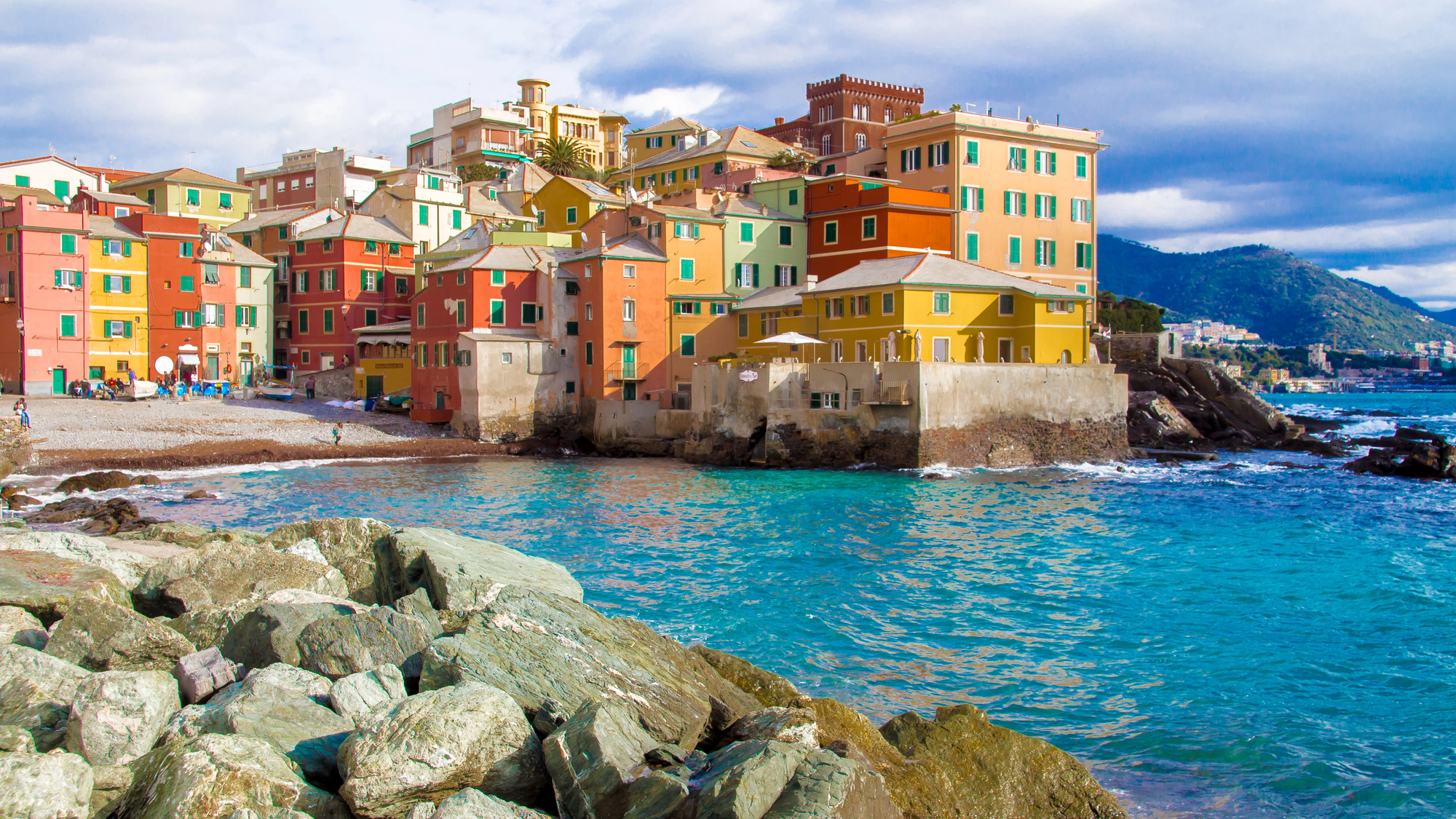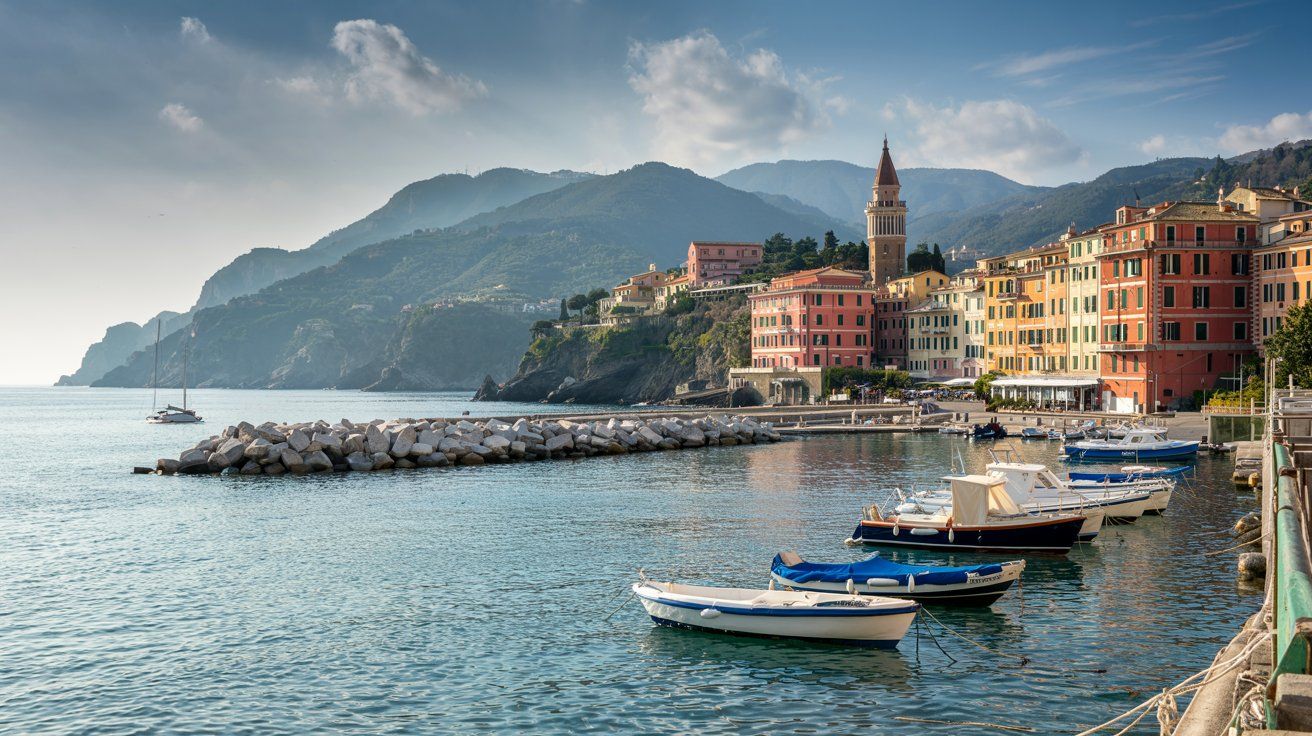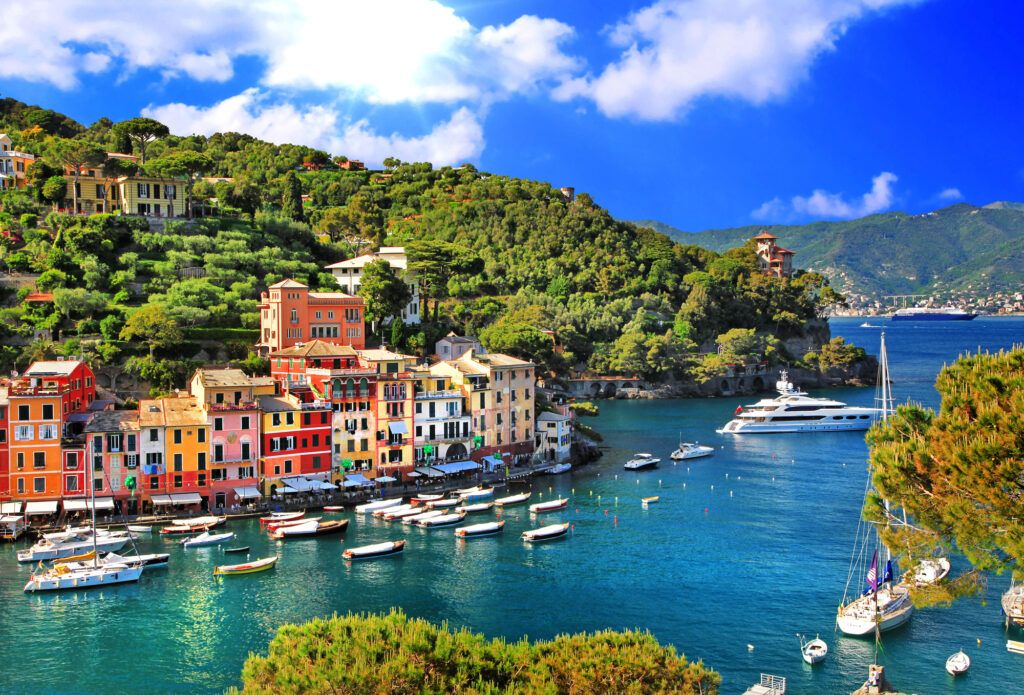Summer’s in full swing on the Italian Riviera—warm Mediterranean breezes, crystal-clear water, and a coastline that just begs you to get out and explore. Mid-July? It’s kind of magical. The weather’s that sweet spot between hot and perfect, and the region is bursting with festivals, open-air dinners, and a sense that you might just stumble onto something wonderful around any corner.
1) Explore the colorful villages of Cinque Terre on a scenic hike
Cinque Terre, or “Five Lands,” is a string of five villages perched on the Ligurian coast. Honestly, it’s one of the best hiking spots in Europe—just look at the views. The Sentiero Azzurro (Blue Trail) links all five villages over 12 kilometers, and this week’s weather is about as good as it gets.
Find available hotels and vacation homes instantly. No fees, best rates guaranteed!
Check Availability Now
You can start in Monterosso and head south, or flip it and begin in Riomaggiore. Either way, you’ll get wildly different perspectives of those iconic, colorful buildings tumbling down to the sea.
The stretch between Vernazza and Manarola is about 10.5 kilometers and takes around 3 hours if you keep a steady pace. The coastal views are the kind that stick with you long after you’ve left.
Don’t even think about hiking during the midday heat (12-3pm)—it’s just not worth it. Early mornings, before 9am, are cooler and way less crowded.
Grab a Cinque Terre Card for trail access, pack more water than you think you’ll need, and wear real shoes. The path isn’t exactly a stroll—there are steps, inclines, and plenty of uneven ground.
2) Visit the Aquarium of Genoa, one of Europe’s largest marine life exhibits
The Aquarium of Genoa is massive—Italy’s biggest, and honestly, it’s up there with the best in Europe. Right in the old Porto Antico, it’s an essential stop if you’re anywhere near Liguria.
Inside, you’ll wander through 33,000 square meters and meet over 15,000 animals from about 600 marine species. The 70 themed exhibits are arranged to mimic real habitats, so it doesn’t feel like a typical aquarium.
Block out at least 2-3 hours to do it justice. Expect to see manatees, sawfish, dolphins, and a whole crew of Gentoo penguins.
July brings big crowds. Book tickets ahead to skip the worst of the lines.
There’s more than just tanks to stare at—interactive displays and talks make it pretty engaging, even for adults. Most info’s in English, so you won’t be lost.
If you can, get there early—mornings are quieter, and you’ll catch the animals at their liveliest.
3) Take a boat tour from Portofino to San Fruttuoso Abbey
Hop on a boat tour from Portofino to San Fruttuoso for one of the best views of the Ligurian coast. These 1.5-hour trips run all day, but mornings are usually the smoothest ride.
The boat glides past the Portofino Lighthouse and those unreal blue waters. Guides (yes, in English) share the backstories that really bring the scenery to life.
San Fruttuoso is only reachable by boat or on foot, which makes arriving feel like a little adventure. The 10th-century abbey seems to rise straight out of the sea.
You’ll usually get about an hour to poke around the abbey, museum, and the bay.
Some tours toss in a snorkeling stop at the Christ of the Abyss statue—a bronze sculpture sunk just offshore.
Book early this week—summer spots go fast. Prices float between €40-80, depending on what’s included.
4) Relax on the pristine beaches of Monterosso al Mare
Monterosso al Mare, the biggest of the Cinque Terre villages, is the place to actually stretch out on real sand. Its golden beaches and clear water are perfect for a July cooldown.
Fegina Beach is the main stretch—great for swimming, with clubs renting loungers and umbrellas. Show up before 10 AM if you want a decent spot; the crowds get thick later.
The old town beach is smaller, quieter, and just as pretty if you’re after something low-key. Both spots offer those classic Ligurian views—colorful houses, blue water, the works.
Between dips, grab a gelato or a cold drink from the beach bars. Lots of people split their time between the sand and wandering through Monterosso’s winding streets.
The weather’s set for sunny skies and about 30°C (86°F) all week. Water shoes might save your feet from the hot sand at midday.
5) Discover the historic old town of Genoa with its palaces and narrow alleys
Genoa’s old town is one of Europe’s biggest medieval centers—a real maze of “caruggi” (narrow alleys) that pull you right into the past. The Centro Storico is packed with tall Ligurian houses, ancient city gates, and a vibe that’s equal parts gritty and grand.
Honestly, the best way to see it is to just wander and let yourself get lost. There’s always something tucked around the next corner.
The baroque streets and grand palaces show off the city’s old-school wealth. The Palazzi dei Rolli are especially impressive if you’re into architecture.
Wednesday afternoons are lively—shops open up and the alleys fill with locals. There’s a daily guided walking tour at 2:30 PM from Piazza de Ferrari if you want the highlights in under 2 hours.
And don’t forget to look up—laundry strung between buildings is a Genoa classic, and photographers love it.
6) Enjoy fresh Ligurian seafood at a seaside restaurant in Camogli
Camogli’s a fishing village that still feels the part, with colorful houses and a tiny harbor. It’s also a top spot for seafood—no surprise, really.
Ristorante Da Paolo is a local favorite, family-run and focused on whatever came in off the boats that morning. It’s small, so the vibe is intimate and the food’s as fresh as it gets.
La Camogliese nails the classic Ligurian feel—friendly, with knockout sea views from the veranda.
If you want to dodge the bigger crowds, Ristorante Da U Batti is a good bet, tucked away from the main drag and all about local flavors.
Elegant resorts, charming apartments, and vacation rentals with immediate confirmation. From Portofino to Cinque Terre, discover the most beautiful coastal towns of Liguria!
See Available Properties
Sunset is the best time to grab a table—the view over the Mediterranean is hard to beat. Definitely call ahead for reservations, especially this week.
7) Cycle along the coastal paths between Santa Margherita Ligure and Portofino
The ride from Santa Margherita Ligure to Portofino is about 5.5 kilometers (3.4 miles) of pure Ligurian beauty. Coastal views, wildflowers, and that salty breeze—what’s not to love?
Don’t have a bike? No problem. Local shops in Santa Margherita rent them out by the hour or day, helmet included.
The route mostly follows the same scenic path as hikers, but you’ll get there faster on two wheels. Paraggi Beach is a nice midway stop, with clear turquoise water if you fancy a swim.
There are a few gentle hills, but nothing too crazy. The path is in good shape, though it can get busy.
When you reach Portofino, lock up your bike and wander the harbor. Some folks extend the ride into Portofino Park’s mountain trails—a bit tougher, but worth it for experienced cyclists.
8) Attend a local festival or outdoor concert in the charming towns
July turns the Riviera into a big celebration, with festivals and concerts lighting up the towns. You’ll hear everything from Italian folk to jazz drifting through the piazzas.
Camogli’s Jazz by the Sea runs July 15-17, with shows starting at 9 PM right by the harbor. Expect food stalls and a fun, laid-back crowd.
Rapallo lights up with the Festival delle Lanterne on July 14—hundreds of lanterns, local bands, and stalls selling crafts along the waterfront.
Santa Margherita Ligure’s Summer Classical Series hits July 16 in the gardens of Villa Durazzo. It’s a ticketed event, and with only 200 seats, you’ll want to book ahead.
If you’re after something more chill, Sestri Levante hosts free acoustic sets nightly at the Bay of Silence. Bring a blanket, sit on the sand, and just soak it up.
Arrive early—seats and good spots go fast, especially in these postcard towns.
9) Taste authentic pesto Genovese and local wines in a cooking class
The Italian Riviera lets you actually get your hands dirty making authentic Genoese pesto using a marble mortar. These classes go way beyond just eating out—they give you a real feel for Ligurian food traditions.
In Sestri Levante, private cooking sessions with local chefs pull back the curtain on what makes pesto truly special. Most start you off with a glass of Vinaccieri wine—honestly, not a bad way to kick things off—before you start grinding basil and pine nuts.
Plenty of workshops throw in traditional walnut sauce and Genoese sage focaccia too. It’s a chance to sample the region’s herbs and old-school baking in one go.
The small-group format keeps things relaxed. You can ask whatever’s on your mind and get tips directly from the pros. A lot of these classes happen in people’s homes or quirky old buildings, so the vibe feels pretty genuine.
You’ll walk out with new skills, a printed recipe, and—if you’re lucky—a container of fresh pesto for later. Classes for this week are still open, but spots are disappearing fast.
10) Explore the medieval village of Apricale nestled in the Maritime Alps
Apricale sits just 20 kilometers inland from the coast, making it an easy day trip if you want a break from the seaside crowds. This picturesque hill village keeps popping up on lists of Italy’s “most beautiful villages,” and it’s not hard to see why.
Wandering Apricale’s tight-knit center, you’ll duck through stone alleys and past ancient houses that really haven’t changed much in centuries. The village square is where everyone gravitates—whether you’re after a coffee or just people-watching.
Right now, the weather’s perfect for checking out Apricale’s medieval architecture and taking in the views across the forested hills. If you’re into photos, mornings are magic for the light.
Restaurants here serve classic Ligurian food, so it’s a solid spot to grab lunch after you’ve explored. Some say Apricale has the best restaurants in the region, and honestly, it’s hard to argue once you’ve tasted the local specialties.
You might stumble across open-air art installations as you wander—modern pieces tucked into medieval corners. It’s a cool mix of old and new that gives Apricale a bit of edge.
Understanding the Italian Riviera in July
July turns the Italian Riviera into a sun-soaked playground—think perfect swimming weather, long days, and a ton of energy everywhere you look. The coast buzzes with festivals and beachgoers, so a little advance planning goes a long way if you want to dodge the biggest crowds.
Easy booking across stunning accommodations from historic hotels to modern retreats. Pastel-colored buildings and crystal waters create the perfect Mediterranean escape!
Secure Your Italian Getaway
Weather and Climate Expectations
Temperatures in July usually hover between 75-85°F (24-29°C) during the day. Nights cool off a bit, dropping to 68-72°F (20-22°C), which is just right for eating outside.
The sea warms up to 73-75°F (23-24°C)—basically, you can swim for hours without freezing. Rain’s rare, so expect blue skies and some serious sunshine most days.
Humidity creeps up in mid-July, and the sun can be brutal between 11am-3pm. You’ll want high-SPF sunscreen, sunglasses, and clothes that breathe. Trust me, you’ll feel it otherwise.
Early mornings and evenings are best for sightseeing. If you’re booking a place to stay, try to get one with air conditioning—plenty of the older buildings just don’t have it.
Local Events and Festivities this Week
The July 13-19 period is packed with events. Portofino’s Harbor Festival (July 15-16) brings boat parades and seafood feasts to the waterfront.
Monterosso in Cinque Terre throws its Wine Festival (July 17), pouring local Sciacchetrà and offering vineyard tours. You’ll need to book ahead—these tastings fill up fast.
Santa Margherita’s Night Market (July 13, 16, 19) lights up the promenade from 6pm till midnight with crafts, street performers, and food stalls.
Several towns are getting ready for San Lorenzo’s feast, so you’ll spot more processions and elaborate church decorations as the week goes on.
Music Events:
- Sanremo Jazz Sessions (July 14-15)
- Classical concerts at Rapallo’s Castle (July 18)
- Nightly beach DJ sets in Alassio
Travel Tips for Mid-July Visits
Book your hotel and dinner reservations at least a couple weeks ahead—July gets booked solid fast. Many restaurants do two dinner seatings (7:30pm and 9:30pm); if you want a more local vibe, try the later one.
The regional trains are your best bet for hopping between towns. If you’re heading to Cinque Terre, grab the Cinque Terre Card for unlimited train rides and hiking access.
Start your day early (before 9am) or explore during the Italian lunch lull (1-3pm) when most tourists are off eating.
Pack water shoes—the beaches are rocky—and consider renting a beach chair (€15-25/day) at a private club. It beats fighting for a spot on the packed public sand.
Ferries between towns offer great views, but buy tickets early. Afternoon departures sell out, especially in July.
Navigating Transportation and Accommodation
Getting around the Italian Riviera in July takes a bit of planning and a dash of patience. With so many visitors, you’ll need to think ahead about both transport and where you’ll sleep.
Public Transport Options Along the Riviera
The regional train line between Genoa and La Spezia is your main artery here. Trains roll through every 30 minutes or so, and tickets run €2-10 depending on distance. Buy them from station machines and don’t forget to validate—yes, they do check.
Buses fill in the gaps, especially for hill towns the train skips. The #82 coastal bus is a favorite, winding along the sea between Portofino and Santa Margherita Ligure for just €2.50 a ride.
If you’re exploring Cinque Terre, the hiking pass covers unlimited train rides between the five villages—€18 for a day in July.
Ferries are another option, linking Portofino, Santa Margherita, and Camogli. The Portofino-San Fruttuoso boat (€12 one-way) is the only way to reach that secluded abbey beach.
Best Practices for Booking Accommodation in Peak Season
If you want to stay in July, you’ll want to book your place at least 3-4 months ahead. Wait too long, and you’ll probably get stuck with higher prices or a spot that’s not exactly where you hoped.
Why not look at less touristy towns like Sestri Levante or Rapallo? You’ll usually find rates around €120-150 per night, which is a lot friendlier than the €200+ you’ll see in Portofino or the Cinque Terre villages.
For trips longer than three nights, apartments can be a better deal than hotels. Booking.com and Airbnb have tons of options, but double-check if there’s air conditioning—July can get pretty sweltering, often over 30°C (86°F). Not every place has it, and that can be a rude surprise.
Most places want you to stay at least 3 nights during peak season, and if you can swing a midweek check-in, you might catch a break on price compared to weekends.
If you’re a light sleeper, ask for a room away from the restaurant areas in the old town centers. A lot of places stay open until midnight, and outdoor seating means you’ll hear the buzz well into the night.
From seaside palazzos to hillside villas, find your perfect stay along this stunning stretch of Mediterranean coastline. Instant booking with best price guarantee!
Browse Accommodations Now

